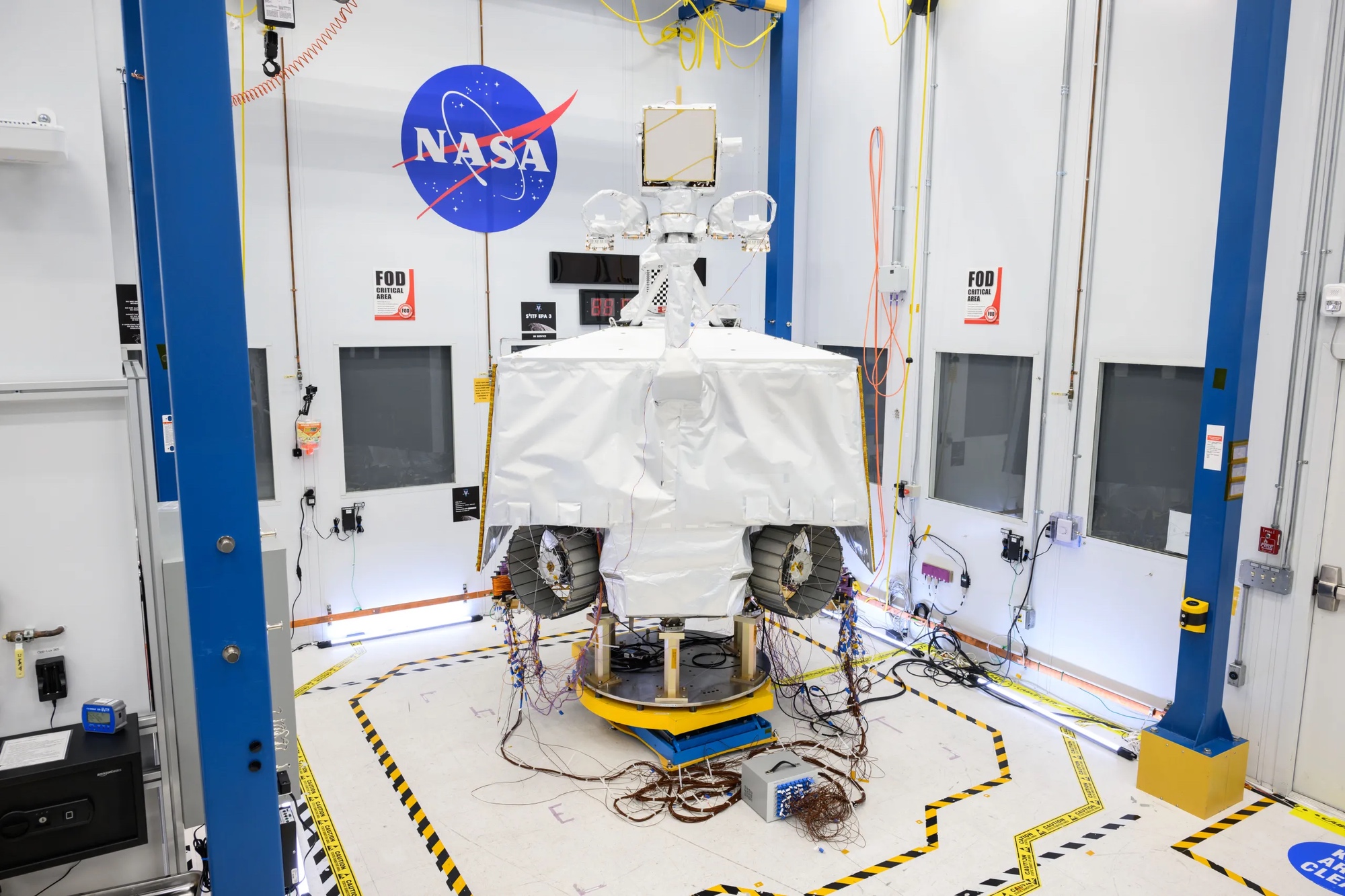LOS ANGELES – NASA is asking companies and organizations to bid on a robotic lunar rover that the agency announced last month it would cancel even though its construction is nearly complete.
NASA issued a request for information on Aug. 9 about the operation of the VIPER (Volatile Matter Explorer) spacecraft. NASA announced on July 17 that it plans to cancel the spacecraft, citing development delays and cost overruns amid broader budget pressures across the agency’s science programs.
When NASA announced the project’s cancellation, it said it was seeking “expressions of interest” from companies, organizations and international partners who might be interested in taking on the rover. Those responses were due Aug. 1, and the agency has received at least a dozen responses, according to industry sources.
New Request information The agency is inviting U.S. companies and organizations interested in acquiring the VIPER vehicle to submit details about how they will use the vehicle. “Partners will start with the current VIPER vehicle and are expected to complete any remaining systems-level testing, arrange for successful integration and landing on the Moon, conduct a science/exploration campaign, and publicly release scientific data,” the agency said.
NASA is asking RFI respondents to describe their mission objectives for the VIPER project and how it will achieve at least some of NASA’s original science objectives as well as “other opportunistic value to NASA.” NASA also wants details on how the partner will execute the mission, and what resources that partner will require from NASA on a reimbursable basis.
The agency explained in the request for information that the organization seeking to acquire VIPER is expected to send the vehicle to the moon intact: “Partners may not disassemble and use VIPER tools/parts separately from the VIPER mission.”
“We want to leverage as much of the engineering, technology and expertise this project has developed to advance scientific knowledge of the Moon as possible,” said Nikki Fox, NASA’s associate administrator for science, in a statement. “The partnership opportunities in the VIPER program will allow us to do this without compromising the pace of our future commercial deliveries to the Moon, to continue lunar science and exploration for the benefit of all.”
The lunar science community is still smarting from NASA’s decision to cancel the VIPER mission, arguing that the vehicle is nearly complete and that the science it can do, studying potential water ice deposits near the moon’s south pole, will not be replicated by other missions.
In a briefing to discuss the cancellation, NASA officials said they would save at least $84 million by halting work on VIPER now, a figure they suggested could grow if the vehicle encounters problems during ongoing environmental testing. “I will tell you that in general, environmental testing at the system level of spacecraft development reveals problems that need to be corrected, which will take more time and money,” said Joel Kearns, deputy associate administrator for exploration in NASA’s Science Mission Directorate.
However, VIPER project scientist Anthony Colaprete noted at a NASA Exploration Science Forum on July 23 that the vehicle had completed vibration and acoustic testing for launch and was preparing to enter thermal vacuum testing. “Every component inside the vehicle has gone through a thermal vacuum at the component level, so there’s very little chance of major issues as we move through the thermal vacuum,” he added. NASA’s $84 million estimate includes reserves that could cover any issues that might arise during testing.
“As of July 23, 2024, the fully assembled rover has successfully completed vibration and acoustic test campaigns, resulting in launch qualification completion,” NASA said in the RFI. “The rover will operate through TVAC [thermal vacuum] The next TVAC test is expected to be completed in October 2024.
Colabrete noted that the science team has developed the trajectory that the rover will take while on the lunar surface, a 139-day trajectory that will visit several permanently shaded regions, or PSRs, that may contain ice. This will allow the rover to conduct scientific research that would not be possible on missions.
“VIPER is designed to travel long distances, stay in the PSR for long periods of time – nine hours – and drill repeatedly,” he said. “Steady drilling activities will never come close to making up for what VIPER can do.”
Kearns defended the decision to cancel VIPER in an earlier presentation at the forum, saying the costs would require NASA to “cancel and deactivate other lunar activities,” such as other Commercial Lunar Payload Services (CLPS) landing missions. NASA plans to deliver VIPER through CLPS, using Astrobotic’s Griffin lander.
However, scientists at the meeting noted that NASA is keeping the Griffin mission and may fly the mass simulator instead of VIPER. They also stressed that VIPER’s science cannot be replicated on other future missions.
NASA is due to receive responses to the request for information by Sept. 2. The agency said it will explore potential international partnerships for the VIPER project “through separate channels.”
Related to

“Typical beer advocate. Future teen idol. Unapologetic tv practitioner. Music trailblazer.”







More Stories
Boeing May Not Be Able to Operate Starliner Before Space Station Is Destroyed
How did black holes get so big and so fast? The answer lies in the darkness
UNC student to become youngest woman to cross space on Blue Origin